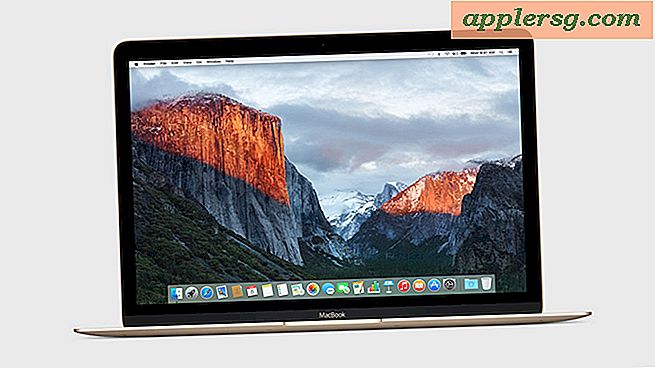OS X El Capitan Installer. Official OS X El Capitan Installer from the Mac App Store. Un-archive the zip archive and you will get the app Installer. A bootable ISO or bootable USB can be made from this installer. Instructions on how to do that are on the Internet/Youtube. Once the terminal window opens up, navigate to where the installer is by using the cd command. Now, you will have to change the date. To find out the date when the installer was downloaded, use the stat Install OS X El Capitan.app command. This will list down the date. After that, use the date command to change the date and time of your Mac.
Bootable USB Installers for OS X Mavericks to Sierra
First, review this introductory article: Create a bootable installer for OS X Mavericks or Yosemite - Apple Support. Second, see this How To outline for creating a bootable El Capitan installer. Simply replace the Terminal command with the one from the preceding article by copying it into the Terminal window.
You will need an 8GB or larger USB flash drive that has been partitioned and formatted for use with OS X.
Drive Partition and Format
- Open Disk Utility in the Utilities folder.
- After Disk Utility loads select the drive (out-dented entry with the mfgr.'s ID and size) from the side list.
- Click on the Erase tab in the Disk Utility toolbar. Name the drive, 'MyVolume'. <---- IMPORTANT!
- In the drop down panel set the partition scheme to GUID. Set the Format type to Mac OS Extended (Journaled.)
- Click on the Apply button and wait for the Done button to activate. When it does click on it.
- Quit Disk Utility.
Create Installer
Open the Terminal in the Utilities folder. Choose the appropriate command line (in red) depending upon what OS X installer you want. Paste that entire command line from below at the Terminal's prompt:

Command for macOS Sierra:
sudo /Applications/Install macOS Sierra.app/Contents/Resources/createinstallmedia --volume /Volumes/MyV --applicationpath /Applications/Install macOS Sierra.app
Command for El Capitan:
sudo /Applications/Install OS X El Capitan.app/Contents/Resources/createinstallmedia --volume /Volumes/MyVolume --applicationpath /Applications/Install OS X El Capitan.app
Command for Yosemite:
sudo /Applications/Install OS X Yosemite.app/Contents/Resources/createinstallmedia --volume /Volumes/MyVolume --applicationpath /Applications/Install OS X Yosemite.app
:max_bytes(150000):strip_icc()/CreateBootableElCap-56a5d54d3df78cf7728a1052.jpg)
Command for Mavericks:
sudo /Applications/Install OS X Mavericks.app/Contents/Resources/createinstallmedia --volume /Volumes/MyVolume --applicationpath /Applications/Install OS X Mavericks.app
Press RETURN. You will be asked for your admin password. It will not echo to the Terminal window. Then press RETURN again. Wait for the return of the Terminal prompt signifying the process has completed. It takes quite some time to finish. Be patient.
Oct 5, 2016 8:12 PM
Do not try to install the version of El Capitan downloaded from the App Store Purchased page

it probably has outdated certificates.
There is no need for you to install all the OS X's to get to El Capitan you can install directly from
Mac OS X Snow Leopard 10.6.8. After you have installed Snow Leopard you need to update it to
version 10.6.8 from here,
And if the installation fails you should not have to erase the mac and reinstall Snow Leopard.
If you do have an operating system on your mac and it is functioning then you can download
El Capitan using this method.
Open your Safari browser and click on the link below,
Go to Download OS and click on OS X El Capitan 10.11
this downloads InstallMacOSX.dmg to your Downloads folder.
The next section can only be done on a mac that is capable of running El Capitan.
This includes macs that have the potential to run El Capitan but have been upgraded to a newer OS.
A mac that came preinstalled with an OS later than El Capitan will refuse to do the next bit.
When downloaded open to InstallMacOSX.pkg, double-click on
that and an installation window will open, this does not install El Capitan
Os X Yosemite
but converts the InstallMacOSX.pkg to the Install OS X El Capitan.app which
you will find in your Applications folder, it should be 6.2GBs in size.
(If the installation window asks which disk you want to install to, you must pick
the disk that you are booted to at the time. Not any internal or external disk that
you want to eventually install El Capitan on, that is for later.)
Os X El Capitan Download App Store
To start the installation of El Capitan double click on the Install OS X El Capitan.app.
Os X El Capitan Installer App Store
The copy of the install app self deletes after installing El Capitan, so make sure you keep a copy of the
InstallMacOSX.dmg if you need it in future, or you could just make a copy of the Install OS X El Capitan.app
prior to installing and moving it to an external drive for safe keeping.
It is also possible to create a bootable USB installer disk using the Install OS X El Capitan.app in the Applications
El Capitan Dmg
folder and the createinstallmedia command in the Terminal app.
Read the instructions here,
Sep 26, 2021 12:58 AM